#history of odisha
Explore tagged Tumblr posts
Text
Know About - History of Odisha & Geography of Odisha
In ancient times Odisha was famous as 'Kalinga'. The history of Odisha is about 5,000 years ancient. To know more in detail about Odisha's history and Geography of Odisha read our informational blog. I believe that after reading our blog you will be satisfied.
#odisha map#odisha festival#odisha culture#places to visit in Odisha#history of Odisha#climate of Odisha#geography of Odisha#famous festival of Odisha
1 note
·
View note
Text
Aesthetics of Odisha~
✿.・。.・゜✭・✿・✫・゜・。. ✿

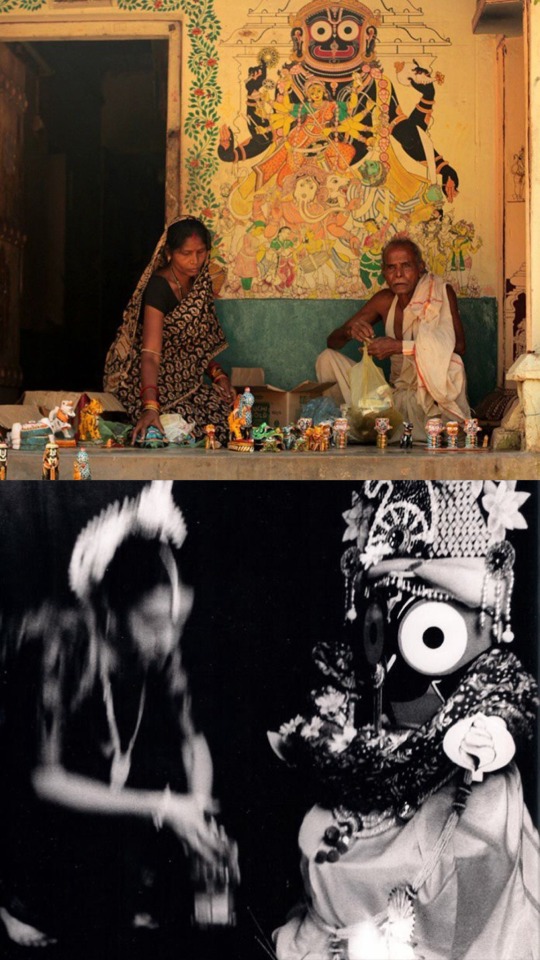
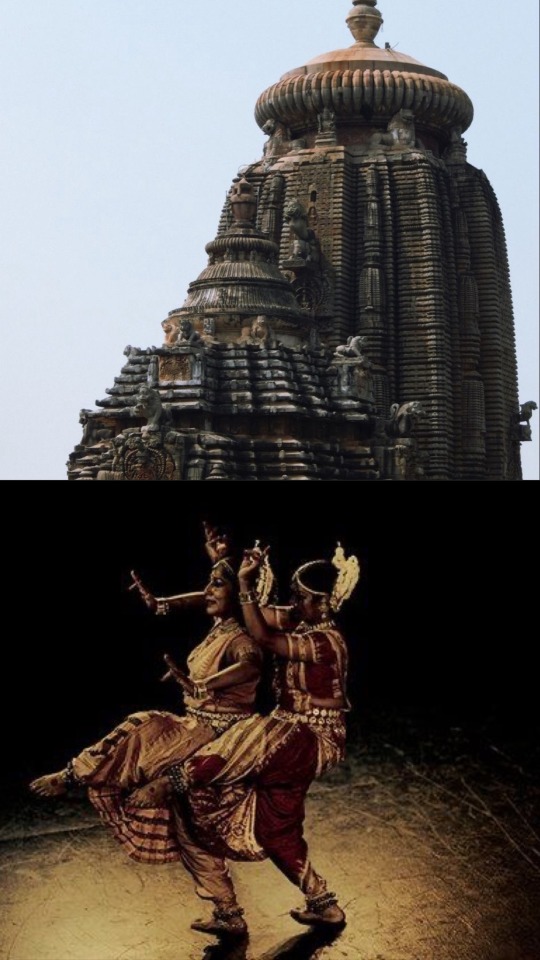

✿.・。.・゜✭・✿・✫・゜・。. ✿
187 notes
·
View notes
Text
The Endangered Dance Form Of West Bengal
Dance, art, and culture and an adda at the local chai shop make a bangali, a pure bangali. Let's have an adda over tea about the endangered dance form, Chhau dance, also spelled Chhou dance. It is found in other regions of India like Jharkhand, and Odisha with different forms and names- Purulia Chhau of West Bengal, the Seraikella Chhau of Jharkhand, and the Mayurbhanj Chhau of Odisha. The dance includes everything from a structured dance with Shaivist, Shakti, and Vaishnavist religious themes to a celebration of martial arts, acrobatics, and athletics done in the festive themes of a folk dance.

It is customarily performed by an all-male group, and the dance may be a syncretic dance form that evolved from the blending of classical Hindu dances and the customs of long-extinct local tribes. The dance is remarkable and unites individuals from various socioeconomic levels in a joyful and religious atmosphere. Performed by male dancers who trained under Gurus or Ustads (masters), or who come from families of traditional artists. Its roots can be found in indigenous dance and combat styles. The basic language of Chhau dance consists of khel (fake combat moves), chalis and topkas (stylized animal and bird gaits), and uflis (movements based on a country housewife's everyday tasks). Oral transmission is used to pass on the knowledge of dance, music, and mask-making. It lasts all night long and is performed in an area known as an akhada or asar.

Local mythology, folklore, scenes from the Ramayana and Mahabharata, as well as abstract concepts, are some of the topics covered by the dancers' repertory. The vibrant music is characterized by the rhythm of indigenous drums like the dhol, dhumsa and kharka and the melody of the mohuri and shehnai. The majority of the dancers are from the Munda, Mahato, Kalindi, Pattnaik, Samals, Daroga, Mohanty, Acharya, Bhol, Kar, Dubey, and Sahoo communities. Musicians come from the Mukhi, Kalindi, Ghadhei, and Dhada groups. They take part in the instrument production as well. Communities of traditional painters known as Maharanas, Mohapatras, Sutradhars are involved in the making of these masks.

Not only were Paika and Natua the forerunners of Chhau dance (particularly Purulia style), but Nachni dance also had a significant influence on the way Chhau is known today. The female moves and gaits used in Chhau dance are virtually solely taken from Nachni dance. The Chhau dance was added to the Representative List of the Intangible Cultural Heritage of Humanity by UNESCO in 2010. The Government Chhau Dance Centre and the Mayurbhanj Chhau Nritya Pratisthan were created by the Government of Odisha in 1960 and 1962, respectively, in Seraikella and Baripada.
44 notes
·
View notes
Text
Indian metallurgy created The pillar, renowned for its craftsmanship, flawless surface and resistance to corrosion behavior.
Ibn Battista in 1333AD heard from learned men the was made of seven metals and was called Haft Jûsh.
Two different stories say Delhi-based Sultan Iltutmish and/or Hindu Tomara Dynasty king Anangapala II took it as spoils of war.
It is 98% iron the secret of its creation was guarded by the tribal people of Odisha.
2 notes
·
View notes
Text
Dandi Mahadevi took the (Bhauma-Kara) throne thereafter in 916 CE and ruled successfully for 20 years.”
- Archana Garodia Gupta, “The Women Who Ruled India: Leaders, Warriors, Icons” / Dr. Manas Kumar Das, “History of Odisha”
“She (Dandi Mahadevi) issued a large number of grants like Kumurang grant, Santarigrama grant, Arual grant, Ambagan grant and two Ganjam grants. She not only possessed grace and charm but successfully maintained her authority over the entire Bhauma kingdom. Further, she secured the boarders of the Bhauma-Kara dynasty from the "formidable and hostile kings, humbled by her prowess". In her records, she assumed imperial titles like 'Paramamahesvari', 'Paramabhattarika' and 'Maharajadhiraja Paramesvari'. This indicates that she was a powerful ruler. This fact has been further corroborated by the donation of lands both in Uttara Tosali and Dakshina Tosali. The description of pearls and gems in her records testifies the fact, that (the) Bhauma Kingdom was prosperous by her time.”
#historicwomendaily#fun fact: she was preceded AND succeeded by a ruling queen/regent (her mother and stepmother respectively)#I'm still desperate to know how old she was when she took over and when she died#history#indian history#dandi mahadevi#bhauma-kara#odisha#india tag#queue#mine
13 notes
·
View notes
Text
Horse Rockart in Pandavahara Gumpha, Khurda, Odisha
Horse Rockart in Pandavahara Gumpha, Khurda, Odisha is a powerful testament against the fake Aryan Invasion Theory. Its survival now hinges on combating rampant mining activities. #Archaeology
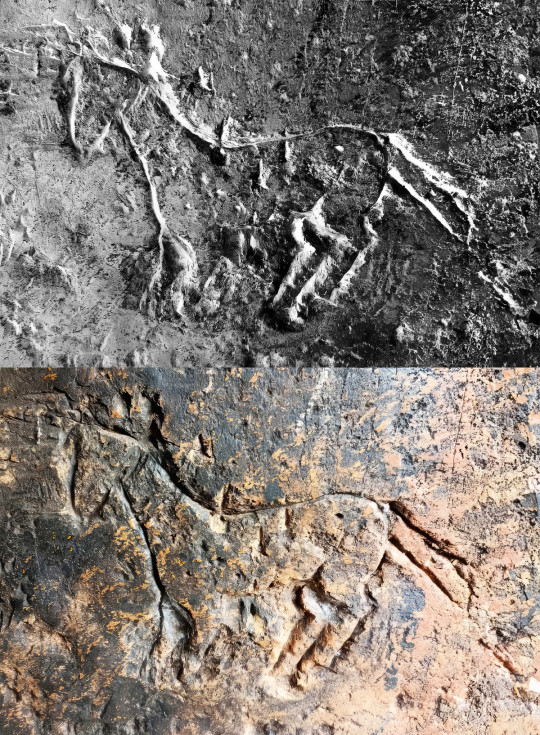
View On WordPress
#ait#AMT#archaeology#aryan invasion theory#bharat#fake AIT#History#horse#india#odisha#petroglyph#rockart
2 notes
·
View notes
Text
ART OF ODISHA
ART OF ODISHA
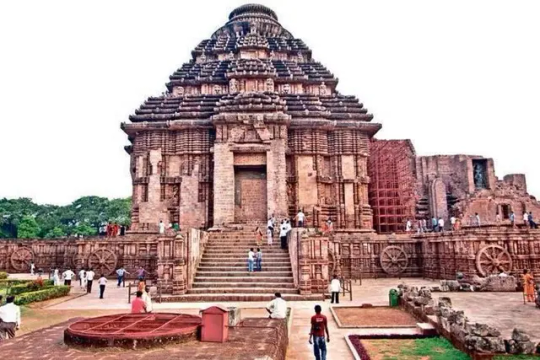
The Rock Art of Odisha dates back to as early as the prehistoric period. The earliest reported are the rock shelters of Vikramkhol in Jharsuguda district. The cells attracted men to live there, who decorated these rock shelters with paintings and engravings in various geometrical forms and figures of human and animals.
HERE ODISHA HISTORY BOOK AVAILABLE
Most of these sites are found in the hills of Sundergarh, Jharsuguda, Sambalpur and Kalahandi. The rock edicts at Dhauli, Jaugad and the archeological treasures found at excavation sites of Sisupalgarh testify to the earliest highly developed sculptural art of Orissa covering a period of about 2000 years.
The forepart of an element, hewn out of solid rock at Dhauli represents the earliest sculpture in Odisha. With the rise of Kharavela (Chedi dynasty) in the first century BC caves were ordered to cut in the solid rocks for the use of Jain ascetics. The caves of Khandagiri and Udayagiri decorated with highly artistic large panels depicting a vivid picture of the contemporary society find special mention in the rock cut architecture of India.
Figures of Jain tirthankars and Sasanadevas with their emblems have been found in caves in Puri, Keonjhar, Balasore and Koraput districts. The caves consist of one or more cells and a few of them are fronted by pillared verandahs.
The Buddhist sculptural art developed with Emperor Ashoka from 261 BC to about 12th Century AD. With the transforming of Mahayana form of Buddhism to Vajrayan, the creative genius of the artists once again attained its peak as reflected by Buddhist sculptures of Lalitgiri, Udayagiri and Ratnagiri.
Sculptures representing Boddhisatva and Avalokiteswara in different forms along with Buddha images, stupas and monasteries were the main constituent of the early medieval Odishan sculptural art.
However, the art found its supreme expression represented by the sculptures pertaining to various sects of Hinduism in Orissa, the Saivism, Vaishnavism and Shaktism (represented by Durga and her different forms). The Sailodbhava, the Bhaumakaras, the Somavansis and the illustrious Gangas are particularly known for temple building. The sculptures and superb carvings on the temples at Bhubaneswar, Puri and Konark are the finest examples of the Odisha’s glorious past.
Look out for the sculptures of nayika and mithuna figures, yakshas and yakhis (the male and female deities associated with ancient fertility cults), heavenly musicians, human poses and expressions, elephants, horses and soldiers and those depicting day to day themes, like hunting, dancing, games and family life. After the fall of the Gangas, sculpture in Odisha vanished as an art form.
2 notes
·
View notes
Text
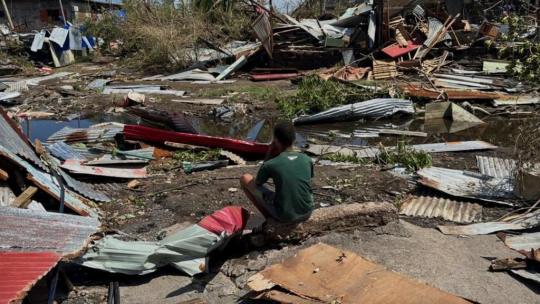
We feel completely abandoned': Mayotte residents call for help after devastating cyclone
As we've been reporting throughout the day, hundreds of people are feared dead in Mayotte after Cyclone Chido swept a path of devastation through the island.
Here's some of the latest footage we've seen, which shows views of the neighbourhood Labattoir from above: Read more
#devastating cyclone#most devastating cyclone in india#most devastating cyclone#when did devastating cyclone occur in odisha#most devastating cyclone in bangladesh#most devastating cyclone in australia#report writing on the devastating cyclone#your experience as a witness to a devastating cyclone#most devastating cyclone in odisha#the devastating cyclone originating in the china is called#most devastating cyclone in history#what was the most destructive cyclone#devastating storm#devastating hurricane#activity 1 devastating tropical cyclone#describe the aftermath of the devastating super cyclone#a cyclone is a devastating storm connectors#what is the most devastating result of a tropical cyclone#a cyclone is a devastating storm in bangladesh#a cyclone is a devastating storm#deadly cyclone bangladesh#deadly bomb cyclone#deadly bangladesh cyclone one of longest seen#which part of cyclone is most dangerous#a cyclone is a devastating storm in bangladesh connectors#most devastating cyclone in west bengal#worst cyclone#devastating b#destructive cyclones#the devastating cyclone originating in the china sea is called
0 notes
Text
Why do the Puri Jagannath Temple flags generally fly in the same direction as the wind?
We all know that flags generally fly in the same direction as the wind, but the temple flag is always seen flying in the opposite direction. This baffling phenomenon has led scientists to research how it’s possible, yet the flag’s behavior remains unexplained. However, many people believe it is due to the power of Lord Jagannath.
1 note
·
View note
Text
The Bhauma-Kara dynasty, which reigned over parts of ancient India, remains a fascinating chapter in the region's history, particularly in the context of Odisha's historical and cultural evolution. Although the dynasty's existence spanned only a few centuries, its impact on regional politics, culture, and architecture is notable.
0 notes
Text
Oriya language, also known as Odia, holds a significant place in the cultural and linguistic landscape of India. With a rich history spanning centuries, Oriya has evolved through various phases, shaping its present position as one of the prominent languages in the country.

0 notes
Text
Find the best Places to Visit in Odisha & Odisha Map
Are you interested in visiting Odisha? If your answer is yes, then you should learn more about these places to visit in Odisha, the famous festival of Odisha, Culture, History, Climate, Where to Stay, Transport, Economy, and Education, these more queries. To learn more, visit our blog.
#odisha map#places to visit in odisha#odisha festival#famous festival of odisha#odisha culture#history of odisha#climate of odisha#geography of odisha
1 note
·
View note
Text

#odisha#aitctamilnadu#mamatha banerjee#abhishek banerjee#aitcofficial#history#all india trinamool congress#tamil nadu news
0 notes
Text
here's how armand can still be bengali
why do i think so? no other good reason than i am bengali myself and i want armand to be. (also assad zaman's family is from bangladesh. bengali solidarity!!!)
bengal: the region in south asia comprising present-day bangladesh and the indian states of west bengal, odisha, assam and parts of bihar.
armand said in the season one finale, that takes place in 2022, he is a 514 year old vampire. is it 514 years including or excluding his human years? let's go with including. that means armand would have been born in 1508.


now what was going on in india and bengal in 1508? well, the mughals hadn't come to india yet; it's still about two decades before babur makes his way here. delhi was under the rule of the lodi dynasty, the delhi sultanate was in its dying days. most of north india, mainly uttar pradesh and bihar was under the jaunpur sultanate. bengal was still it's own independent kingdom, called the bengal sultanate. alauddin hussain shah had just seized power and become the sultan of bengal in 1494, beginning the hussain shahi dynasty (they ruled in bengal till 1538 when the mughals captured the region).
india as a country did not exist yet. even it's conception would be a few centuries away still. the subcontinent was a collection of big and small kingdoms and sultanates, constantly warring amongst themselves, some ruled by hindu rulers others by muslims, each with their own distinct histories and cultures. bengal was one of the most prosperous and thriving among them. the bangla language and bengali culture was just beginning to develop.


vasco da gama had arrived in india in 1498, landing at kozhikode on the malabar coast. this began the arrival of the portugese in india, and soon other european colonialists followed. they soon set up their capital in goa, built forts all along the western coast and established trade through obtaining licenses and exclusive permits from local rulers. they first made their way to the bay of bengal region around 1516, with the first portugese representative- a guy called joao coelho- coming to chittagong (present day bangladesh). the first factory was set up in chittagong the next year.
the portugese traded in spices and cotton and fruits and muslin and also slaves. the european indian ocean slave trade began with the coming of the portugese in the early 16th century. slavery in south asian societies had obviously existed long before, and it was a deeply complex and diverse system of dependency and regimes of slavery. slavery of youth and children was also pretty prevalent: it would not be uncommon for poor, farming families to sell away themselves or their children to zamindars (landlords) and colonial overlords in desperation. there were many, many cases of young children being forced to get onboard ships where they'd be held agains their will and taken to europe, the americas or south-east asia. goa and lisbon were the two cities that linked the movement of goods and people between the indian and atlantic oceans, but goa wasn't the only place where enslaved children were traded in portugese india nor lisbon the only european they were taken to.
one of those kids might as well have been arun.


i know the brief glimpse at the talamasca files showed armand's origin to be in delhi but in this particular scene he clearly says that he was sent *to* delhi, thinking he was going to work on a merchant boat.
this is just a theory i have btw. armand could've been from maharastra or the deccan as well idk. anyway.
armand is a monster, a vicious, villanious creature of unfathomable powers and ferocity. but he is also so deeply tragic. he had been forcibly torn away from his people and his land. he has no memory of his family or his humanity. he has lived for over half a millenium. the india he might've known hasn't existed for centuries, and he never got to know the one that exists today. the bangla he might've spoken no one remembers anymore. he has nothing left of the human he was except that name.
further readings (STRONGLY SUGGESTED!!!):
264 notes
·
View notes
Text
Boita Bandana, a cultural tribute to ancient maritime activities

People in Odisha celebrate Boita Bandana, a boat festival marking the region's maritime glory. This annual observance occurs on Kartik Purnima, the full moon day in the holy month of Kartik. Boita Bandana is a cultural tribute to Odisha’s ancient maritime activities and trade relations with Southeast Asian countries.
Symbolic Act of Floating Boats:

The most important ritual of Boita Bandana is floating little hand-made boats. They are usually made of plantain or banana stems and other similar natural and traditional materials. Boats are laden with various offerings such as flowers, coins, ‘Kaudis’ or cowries, ‘Pana’ or betel leaves, ‘Guā’ or betel nuts, and a lighted lamp. This symbolic act pays homage to Odisha’s rich maritime history and the courageous sailors who engaged in trade with Southeast Asian nations. The festival serves as a cultural bridge connecting the present generation with the seafaring legacy of their ancestors.
Remembering the Sadhabas:
Boita Bandana echoes the collective consciousness & memories of the past. It commemorates the legacies of the Kalinga Sadhabas – the maritime merchants & seafarers. The origins of this festival descend from an ancient maritime tradition of merchant trade and voyages across the ocean to different regions of Asia, which was well developed in this region known in ancient times as Kalinga. This ancient maritime tradition is preserved through this festival which celebrates the voyages of their ancestors, to Southeast Asian countries, which include mainly present-day Bali, Java, Sumatra, and Borneo in Indonesia, Malaysia, Sri Lanka, Thailand, Cambodia, and all the way to Champa region in Vietnam. Local traditions ascribe the origins of the ritual tradition to around the 3rd century BC as Kalinga was a well-known powerful maritime power with strong trading links across the oceans, especially during the reign of the Maurya empire whose rulers coveted the region for its influence.
Kartika Purnima was considered auspicious for them to begin their voyage. It was during this time of the month as well when the Northeast monsoon winds started blowing from November, which was favorable for the merchant mariners as the winds would guide the sails of their boats across the ocean leading them southwards towards Sri Lanka. Thereafter using the ocean currents to cross the Indian Ocean to reach Southeast Asia where they would carry on sailing across different regions for trade. After trading the ships would take the ocean countercurrent to get back to Sri Lanka in time to take advantage of the Southwest monsoon around May and return home. Hence the families of the traveling sailors used to perform rituals on the day of Kartik Purnima for their safe journey and return, which henceforth became the tradition of Boita Bandana (Worship of the Boats).
Boita Bandana and Jagannath Culture:
At Sri Mandira (Jagannath Puri), the deities wear a variety of attires, or ‘besa’, throughout the year. During the holy month of Kartika, they receive special ‘besa’ outfits. In years when the Kartika month includes six days of ‘Panchaka’ instead of the usual five, the deities wear the rare and unique ‘Nagarjuna Besa’. In this special attire, the deities are dressed like ‘Nagarjuna’, a revered figure. This unique ‘besa’ is a significant part of the Kartika Purnima celebrations in Puri. And, Boita Bandana is every year meant to be celebrated in the early morning of Kartik Purnima.
Boita Bandana serves as a vibrant reminder of Odisha’s historical ties with other maritime civilizations and instills a sense of cultural pride among the people.
Information from different sources.
31 notes
·
View notes
Text

A devastating rail crash that left almost 300 people dead has refocused international attention on the importance of railways in the lives of Indians.
Indeed, to many Western observers, images of men and women crammed into overcrowded cars serve as a metaphor for modern India. Take, for example, a report by German newspaper Der Spiegel on India’s population surpassing China’s. Published just weeks before the accident in Odisha province on June 2, the now much-criticized cartoon depicted a shabby Indian train crammed with passengers rushing past a streamlined Chinese train with only two people in it.
Where does this enduring image in the West of Indian railways – and of India – come from? As a scholar of Indian history and author of 2015 book “Tracks of Change: Railways and Everyday Life in Colonial India,” I believe the answers lie in the gigantic infrastructure projects of the 19th century – forged at the intersection of colonial dictates and capitalist demands.
---
A carrier of freight, not people
Railways remain the backbone of passenger traffic in India, transporting some 23 million people daily. In the pre-pandemic 2018-19 financial year, 7.7 billion passenger journeys in India. [...] Yet, when first planned in the 1840s, India’s railways were intended to primarily transport freight and livestock, not people. Indians were thought unlikely to become railway passengers by directors of the English East India Co., a merchant monopoly that gradually annexed and administered large parts of India under U.K. crown control. [...] However, early colonial railway policy was driven by pervasive Orientalist imaginings of a people rendered immobile by poverty, living in isolated villages [...]. The trope interlocked with colonial thinking that railways would foster greater industrialization which in turn would further a capitalist economy. They also aligned with the practical needs of a colonial trading monopoly which needed raw materials for English industries, such as cotton, to be moved swiftly and efficiently from India’s interiors to port towns [...].
---
Despite the doubters, the new Indian railways attracted an increasing number of passengers. The half-million passengers recorded in 1854 when tracks became operational increased to 26 million in 1875. By 1900, annual passenger figures stood at 175 million and then almost trebled to 520 million by 1919-20. By the time of the partition of India in 1947 it had risen to more than 1 billion passenger journeys annually. Indeed, images of overcrowded trains came to epitomize the upheaval of partition, with the rail system used to carry swaths of uprooted peoples across the soon-to-be Pakistan-India border. Third-class passengers, overwhelmingly Indians, comprised almost 90% of this traffic. These escalating figures did not, however, generate a lowering of fares. Nor did they result in any substantial improvements in the conditions of [...] travel. [...]
---
The generally British railway managers seemed disinclined to remedy systematic overcrowding, which included transporting passengers in wagons meant for livestock. Rather, they insisted that such overcrowding was caused by the peculiar habits and inclinations of Indian passengers: their alleged [...] inclination to follow one another “like sheep” into crowded carriages. These attributes were soon rendered into a more public narrative, especially among Western mindsets. Journalist H. Sutherland Stark, writing for the industry publication Indian State Railways Magazine in 1929, stated that though “unversed” in railway administration and traffic control, he knew railway facilities were not the problem. Rather, Indian passengers lacked the mental preparedness, “self-possession” and “method” necessary to travel like “sane human beings.” Stark suggested passenger education as a solution to the perceived problem, making railway travel a tool for “self-composure and mass orderliness.” [...]
---
More than a century later, this depiction endures, though, ironically, it now serves as a foil to understanding contemporary India. In a piece published in The New York Times on March 12, 2005, the author lauded the then-new Delhi metro, emphasizing that it had “none of the chaotic squalor of hawkers and beggars that characterizes mainline railroads in India, nor do desperate travelers hang from the sides of the trains.” As the debate rages on whether safety has taken a back seat to “glossy modernization projects” in India – early analyses suggest signaling failure might have caused June 2, 2023, accident – railways continue to represent India’s history.
In the heyday of empire, they were deemed the technology through which Britain would drag India into capitalist modernity. In 1947, they became a leitmotif for the trauma of the partition that accompanied the independence of India and Pakistan. As the coverage of Odisha accident reminds us, it continues to be a metaphor in the West for evaluating contemporary India.
---
Headline, image, caption, and all text above by: Ritika Prasa. “Overcrowded trains serve as metaphor for India in Western eyes -- but they are a relic of colonialism and capitalism.” The Conversation. 9 June 2023. [Bold emphasis and some paragraph breaks/contractions added by me.]
152 notes
·
View notes